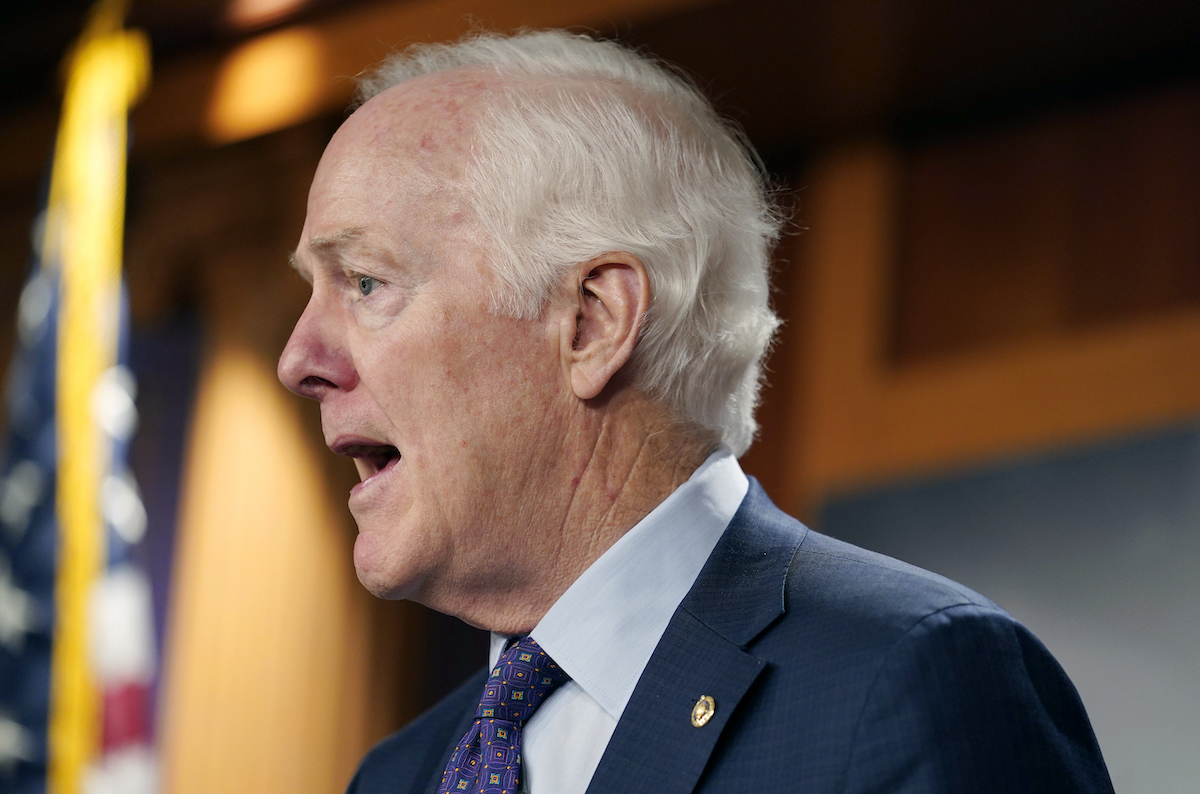

Sen. John Cornyn, R-Texas, fears that relief for immigrants with PhDs or Master’s degrees in STEM fields could derail negotiations over the United States Innovation and Competition Act, a bill meant to make the U.S. more competitive with China in the semiconductor industry and other tech areas. (AP Photo/Mariam Zuhaib)
WASHINGTON, D.C. — Lawmakers from both parties and in both chambers have been negotiating a multi-billion dollar bill with a single, top-line focus.
“The most important part, I think, is the chips for the semiconductors,” said Sen. John Cornyn (R-TX) of the United States Innovation and Competition Act (USICA) of 2022. “If there are other parts that … don’t detract from the votes for the semiconductor part, then I’m open to that.”
USICA is the Senate’s answer to the America COMPETES Act passed by the House in early February.
The part of USICA that GOP lawmakers like Cornyn fear could undermine negotiations is a morsel of relief for immigrants with PhDs or Master’s degrees in STEM fields. Amendments offered by Rep. Raja Krishnamoorthi (D-IL) would make it easier for such qualified immigrants to get green cards, a bridge too far for GOP senators like Chuck Grassley of Iowa and Todd Young of Indiana, who indicated last week to reporters that Krishnamoorthi’s amendments would be dead on arrival in the Senate.
“Unless we have people who can do the work, businesses are going to face problems growing and being able to compete with these Chinese Communist Party-sponsored companies,” Krishnamoorthi said. “There’s no way we can possibly compete without continuing to attract the best and the brightest, most-hardworking people from around the world who, frankly, want to be here.”
Many good immigration provisions in the House version of USICA:
-Startup visa
-Cap exemptions for STEM PhD grads
-5000 yearly special immigrant visas for highly skilled Hongkongers, especially in STEM + health
-Refugees from Hong Kong and Xinjiang + HK TPShttps://t.co/NRk8saTV5m— Jeremy Neufeld (@JeremyLNeufeld) January 26, 2022
On its face, USICA is supposed to increase American competitiveness with China. But even some of the most stalwart Republicans in the Senate like Young, one of the conferees on USICA, admit that without immigrant talent the United States economy cannot compete with China.
“No, I don’t believe we can longer-term,” Young said when asked by Latino Rebels if the U.S. can compete in the semiconductor industry without immigrant talent. “So that’s why we’ve included robust, domestic workforce development and education funding in this legislation.”
Cornyn echoes Young on the need for developing the domestic workforce in the U.S. to fill the jobs in the semiconductor industry that USICA would create.
“We’re gonna have to develop a better workforce, and immigrants could certainly be a part of that,” said Cornyn. “But right now we’ve got to get the chips part done.”
To Krishnamoorthi, the domestic, non-immigrant workforce provisions in USICA are not enough to address the bill’s broader, strategic focus: competing directly with China in a global economy where attracting and retaining top-flight workers in STEM fields —especially with relevant engineering degrees— should be a priority.
“For positions that require the most high-tech talent, those employers are desperate for additional talent,” Krishnamoorthi said. “It’s not like we have to do a lot to attract them. Welcoming them here and retaining them is another issue, and we’re doing a horrible job in that regard.”
Congress is expected to return to Capitol Hill from recess the week of July 11, when they will continue to debate the provisions of USICA.
While reporting on the bill indicates that the immigrant relief provisions are on the ropes, for now Krishnamoorthi’s amendments remain in the legislation’s framework.
***
Pablo Manríquez is the Washington correspondent for Latino Rebels. Twitter: @PabloReports



this man – Krishnamoorthi – is never focused on Americans –he should put more effort in the training and upskilling of young Americans